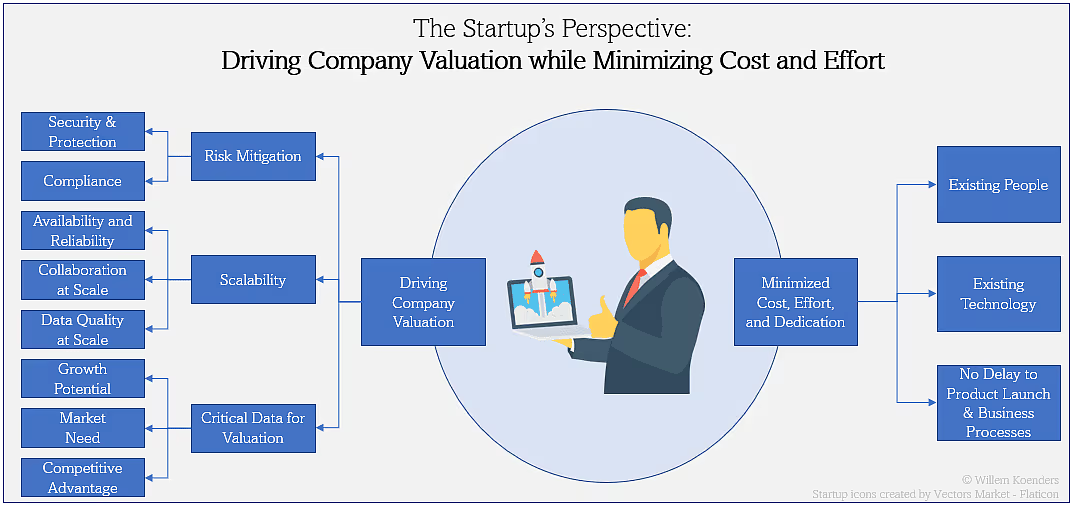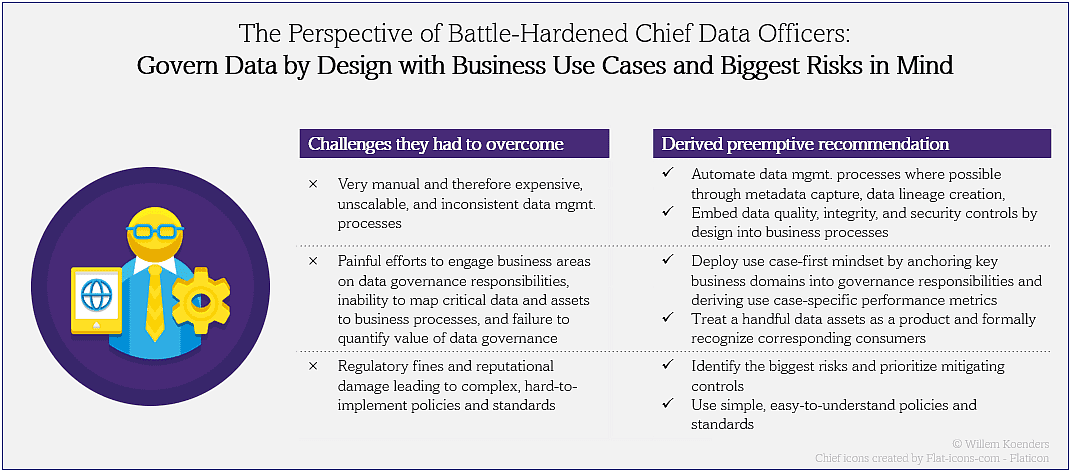Opinion & Analysis
Cultivating a Data-Driven Culture — 7 Proven Strategies for Chief Data Officers
Written by: Ankit Agrawal | SVP of Engineering at Equifax
Updated 4:27 PM UTC, Thu June 13, 2024

For organizations seeking to navigate the complexities of the digital age today, cultivating a data-driven culture is not just an option; it’s a necessity. As Chief Data Officers (CDOs) stand at the forefront of this transformative shift, they are pivotal in steering their organizations toward data-centricity. This article delves into the strategies CDOs can employ to foster a culture that embraces data-driven decision-making.
1. Breaking down silos
One of the first challenges in creating a data-driven culture is the presence of silos within organizations. Data silos not only impede access to information but also hinder collaboration across different departments. CDOs must advocate for integrated data systems that ensure data is accessible and shared across the organization.
Implementing platforms that facilitate data exchange and collaboration is crucial. This practice enhances efficiency and fosters a sense of unity in the pursuit of data-driven goals.

2. Fostering data literacy
A data-driven culture necessitates a high level of data literacy across all levels of the organization. CDOs should champion the development and implementation of comprehensive data literacy programs. These programs should cover the basics of data management, interpretation, and analysis, ensuring that all employees, regardless of their role, understand how to work with data.
Regular workshops, seminars, and access to learning resources can facilitate continuous learning and skill development.
Example: A leading financial services firm improved data literacy across departments through a tailored training curriculum and an internal certification program, resulting in a 60% increase in analytics platform adoption and a 40% reduction in data preparation time for business analysis. By following this structured approach, CDOs can successfully elevate data literacy across their organizations, empowering employees to make better-informed decisions based on data insights.
3. Leading by example
Leadership plays a critical role in the adoption of any organizational culture. CDOs and other senior leaders should lead by example by consistently leveraging data in their decision-making processes. Demonstrating the value of data-driven decisions in achieving successful outcomes can inspire and motivate employees to adopt similar practices in their work.
Here is how this can be achieved:
-
Strategic decision-making: Senior leaders should use data to inform strategic decisions such as market expansion, product development, and resource allocation. Sharing the rationale behind these decisions fosters transparency and demonstrates the value of data.
-
Publicly sharing insights: Regularly present key insights and data findings in company-wide meetings, newsletters, or dashboards to showcase the practical application of data.
-
Encouraging cross-functional collaboration: Foster collaboration between data teams and business units to align data initiatives with strategic goals. Encourage interdisciplinary projects that leverage data insights.
-
Recognizing data-driven achievements: Highlight and reward employees and teams that demonstrate exceptional use of data in solving business challenges.
4. Encouraging experimentation
Innovation and experimentation are at the heart of a data-driven culture. CDOs should create an environment where employees feel empowered to experiment with data, test new ideas, and learn from failures without fear of repercussions. We can achieve this by:
-
Clear experimentation guidelines: Develop clear criteria for conducting experiments, including scope, metrics, and timeline. This provides a structured framework for testing new ideas.
-
Access to tools and resources: Ensure employees have access to the necessary data, analytics tools, and infrastructure for experimentation. Provide training on using these tools effectively.
-
Fail-fast mentality: Encourage a fail-fast approach where small-scale experiments quickly validate or invalidate hypotheses, reducing risk.
-
Celebrating learnings: Recognize not only successes but also valuable learnings from failed experiments, reinforcing a positive attitude toward innovation.
5. Ensuring data quality and governance
Trust in data is a fundamental component of a data-driven culture. CDOs must ensure that data governance policies are in place to maintain high data quality and integrity.

Quality and governance include:
-
Establishing clear data ownership.
-
Implementing robust data quality management processes.
-
Ensuring compliance with data privacy regulations.
When employees trust the data they work with, they are more likely to rely on it for decision-making.
6. Measuring progress and impact
To sustain momentum toward becoming a data-driven organization, CDOs need to establish metrics to measure progress and impact. This includes setting clear goals for data usage, tracking the adoption of data-driven decision-making practices, and measuring the outcomes of these decisions on business performance.
Regularly sharing these success stories and metrics with the organization can reinforce the value of a data-driven culture.
-
Clear goals for data usage: Define specific targets for data usage across departments, such as increasing the number of active data users or the volume of data queries.
-
Tracking data-driven practices: Monitor the adoption of data-driven decision-making by measuring the number of data-informed projects and initiatives.
-
Business performance outcomes: Measure the impact of data-driven decisions on key business performance indicators, such as ROI, revenue growth, customer satisfaction, and operational efficiency.
-
Success stories and metrics sharing: Regularly share data insights, success stories, and key metrics through dashboards, newsletters, or town halls to demonstrate the value of data-driven practices.
7. Navigating overlapping roles with other CXOs
It’s important to note that strategies like breaking down silos and encouraging experimentation aren’t unique to the CDO role. CIOs, CAOs, and CTOs often pursue similar objectives, which can lead to some overlap in responsibilities.
This overlap creates a unique challenge for CDOs. To navigate this complexity, consider these approaches:
-
Collaboration: Build strong relationships with other CXOs to ensure data strategies align with broader business goals.
-
Role clarity: Clearly define the CDO’s distinctive value proposition in terms of data governance, quality, and innovation.
-
Strategic alignment: Align data initiatives with the overall digital transformation objectives of the organization.
Conclusion
Cultivating a data-driven culture is a journey that requires commitment, leadership, and strategic vision. As CDOs navigate this journey, the above strategies can serve as a roadmap for embedding data at the heart of organizational decision-making.
By breaking down silos, fostering data literacy, leading by example, encouraging experimentation, ensuring data quality, facilitating access to data and tools, and measuring progress, CDOs can steer their organizations towards a future where data-driven insights drive innovation, efficiency, and sustained competitive advantage. In doing so, they transform their organizations and pave the way for a new era of data-centric leadership.
About the Author:
Ankit Agrawal is a Senior Vice President of Engineering at Equifax, endowed with a rich professional portfolio spanning over 15 years in software engineering and leadership. His strategic vision and leadership acumen have been pivotal in developing innovative solutions that significantly propel business growth.
Agrawal’s professional narrative is characterized by his profound commitment to excellence, innovation, and the cultivation of collaborative work environments that have consistently delivered outstanding business outcomes.





